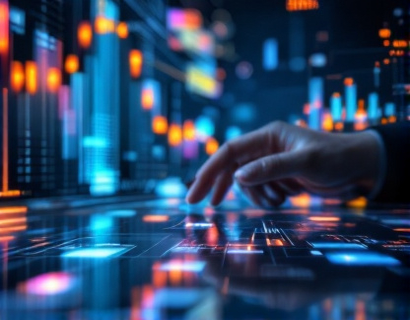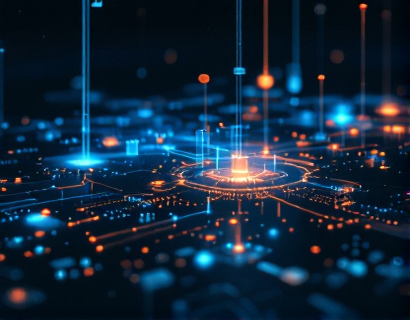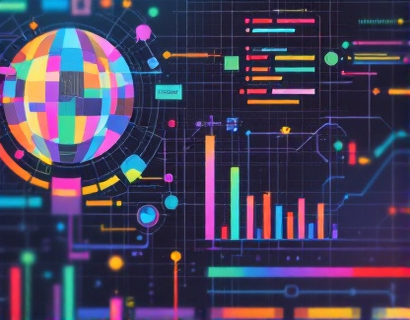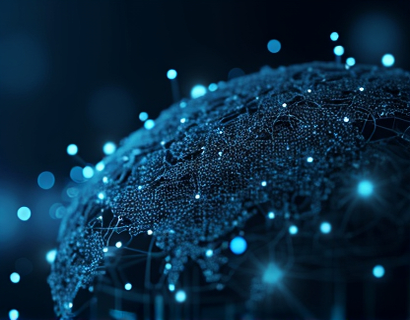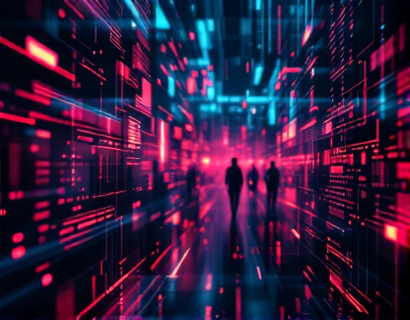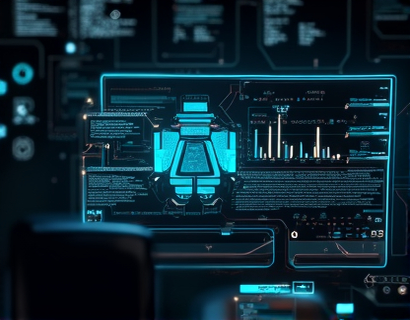AI and Crypto: Catalyzing Next-Gen Productivity with Innovative Digital Solutions
The intersection of artificial intelligence (AI) and cryptocurrency is giving birth to a new era of digital productivity. This fusion is not just a technological curiosity but a transformative force that is redefining how we work, interact, and manage our digital lives. For tech enthusiasts and early adopters, the potential of AI and cryptocurrency to enhance efficiency and streamline processes is immense. This article explores the ways in which these cutting-edge technologies are converging to create innovative digital solutions that maximize productivity.
The foundation of this transformation lies in the unique properties of blockchain technology, the backbone of cryptocurrency. Blockchain's decentralized, transparent, and secure nature provides an ideal platform for AI applications to operate without the traditional bottlenecks of centralized systems. By leveraging blockchain, AI can process and analyze vast amounts of data with unparalleled speed and accuracy, leading to more informed decision-making and optimized workflows.
Enhanced Data Security and Privacy
One of the most significant advantages of combining AI with cryptocurrency is the enhanced security and privacy it offers. Cryptocurrencies, particularly those built on blockchain, ensure that data transactions are immutable and tamper-proof. This means that sensitive information used by AI systems, such as user data and transaction records, remains secure from unauthorized access and manipulation. For businesses and individuals, this translates to a higher level of trust in digital solutions, encouraging broader adoption and more robust integration of AI technologies.
Moreover, the use of cryptographic techniques in AI algorithms can further bolster data protection. Homomorphic encryption, for instance, allows AI models to process encrypted data without needing to decrypt it first. This ensures that sensitive information remains confidential while still being usable for complex computations, a critical feature for industries handling highly sensitive data like healthcare and finance.
Optimized Resource Allocation
AI's ability to analyze and predict patterns can be significantly enhanced when paired with the computational power and incentivization mechanisms of cryptocurrency. For example, AI-driven algorithms can optimize resource allocation in decentralized networks, ensuring that computational tasks are distributed efficiently across the network. This not only reduces energy consumption but also speeds up processing times, making AI applications more responsive and efficient.
In the context of cryptocurrency, mining and staking activities can be optimized using AI to maximize rewards while minimizing resource usage. AI can predict market trends, adjust mining parameters, and even automate trading strategies to enhance profitability. This synergy between AI and cryptocurrency creates a self-sustaining ecosystem where resources are used more effectively, benefiting both the environment and the users.
Automated and Intelligent Processes
AI and cryptocurrency together enable the creation of smart contracts that automate complex business processes. Smart contracts are self-executing contracts with the terms of the agreement directly written into code. When combined with AI, these contracts can adapt to changing conditions and execute tasks with higher precision and speed. For instance, in supply chain management, AI can predict demand and optimize inventory levels, while smart contracts ensure that payments are made automatically upon meeting predefined conditions.
In the realm of finance, AI-driven trading bots can interact with decentralized finance (DeFi) platforms to execute trades, manage portfolios, and hedge risks with minimal human intervention. The transparency and trustlessness of blockchain ensure that all transactions are verifiable and secure, reducing the risk of fraud and errors. This level of automation not only increases efficiency but also reduces operational costs, making businesses more competitive.
Enhanced User Experiences
The integration of AI and cryptocurrency is also revolutionizing user experiences across various platforms. Personalization is a key area where this fusion shines. AI algorithms can analyze user behavior and preferences to provide tailored recommendations and services. In the context of cryptocurrency, this means that users can receive customized financial advice, investment strategies, and product suggestions based on their unique profiles.
Furthermore, the use of AI in user interface (UI) design can create more intuitive and user-friendly experiences. AI can analyze user interactions and feedback to continuously improve the UI, ensuring that applications are accessible and easy to use. For cryptocurrency platforms, this means that even users with limited technical knowledge can navigate complex financial instruments with ease, broadening the adoption of crypto assets.
Innovative Financial Instruments
The combination of AI and cryptocurrency has led to the development of innovative financial instruments that offer new opportunities for investors and businesses alike. Tokenized assets, for example, allow physical assets like real estate, art, and commodities to be represented as digital tokens on the blockchain. AI can analyze market data and predict asset values, helping investors make more informed decisions. Additionally, AI-driven robo-advisors can manage tokenized portfolios, providing automated and optimized investment strategies.
Stablecoins, which are cryptocurrencies pegged to stable assets like fiat currency or commodities, benefit from AI in maintaining their stability. AI algorithms can monitor market conditions and adjust the supply of stablecoins to maintain the peg, reducing volatility and making them more reliable for transactions and savings. This stability is crucial for businesses looking to adopt cryptocurrency for everyday operations.
Supply Chain Transparency and Traceability
Supply chain management is another area where AI and cryptocurrency can drive significant improvements. By combining AI's predictive analytics with the transparency of blockchain, companies can gain real-time insights into their supply chains. AI can track the movement of goods, predict delays, and optimize logistics, while blockchain ensures that all transactions are recorded and verifiable. This level of transparency helps in identifying bottlenecks, reducing fraud, and ensuring compliance with regulations.
For consumers, this means higher quality products and more reliable delivery times. For businesses, it translates to reduced costs and improved operational efficiency. The integration of AI and cryptocurrency in supply chain management not only enhances productivity but also builds trust and accountability throughout the entire process.
Challenges and Considerations
While the potential of AI and cryptocurrency to enhance productivity is vast, there are several challenges and considerations that need to be addressed. One of the primary concerns is the regulatory landscape. As both AI and cryptocurrency continue to evolve, regulatory frameworks are still catching up. Businesses and developers must navigate a complex and often uncertain legal environment, ensuring compliance while innovating.
Another challenge is the technical complexity involved in integrating AI and cryptocurrency. Developing robust systems that can handle the computational demands of AI while maintaining the security and scalability of blockchain requires expertise and resources. However, as the ecosystem matures, these barriers are gradually being overcome, making it more accessible for a wider range of participants.
Future Prospects
The future of AI and cryptocurrency is bright, with numerous opportunities for further innovation and growth. As AI algorithms become more advanced, their ability to process and analyze data from decentralized sources will continue to improve. This will lead to more sophisticated applications in areas such as healthcare, finance, and smart cities. The use of AI in managing and optimizing decentralized networks will also become more prevalent, enhancing the efficiency and reliability of blockchain-based systems.
Moreover, the rise of Web3, a decentralized internet powered by blockchain, AI, and other emerging technologies, promises a new paradigm of digital interaction. In this future, users will have greater control over their data and digital identities, with AI-driven tools providing personalized and secure experiences. The convergence of AI and cryptocurrency will be at the heart of this transformation, driving a new era of digital productivity and innovation.
In conclusion, the fusion of AI and cryptocurrency is not just a technological trend but a fundamental shift in how we approach productivity and efficiency. For tech enthusiasts and early adopters, the possibilities are endless, offering a glimpse into a future where digital solutions are more powerful, secure, and user-friendly than ever before.













